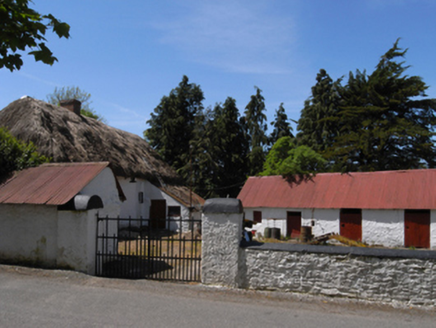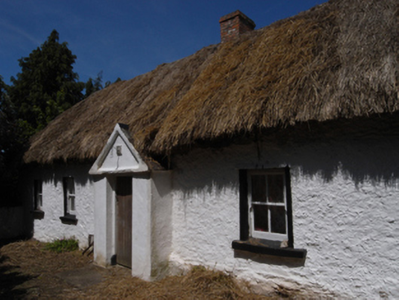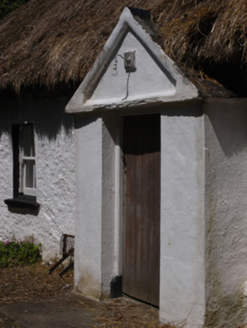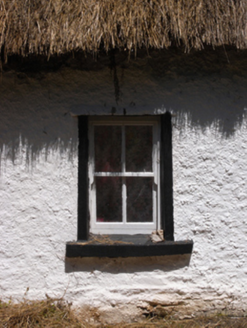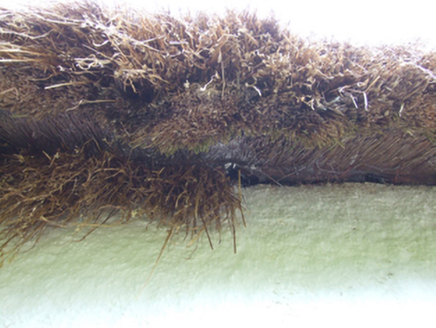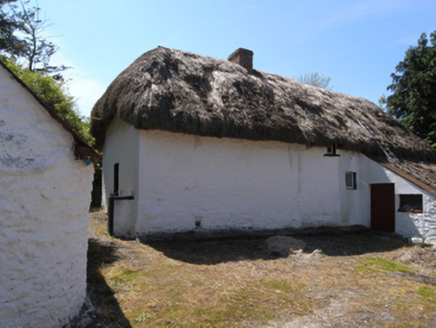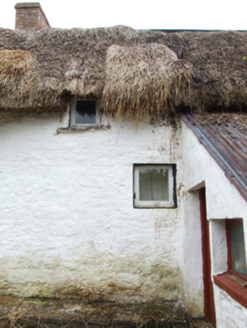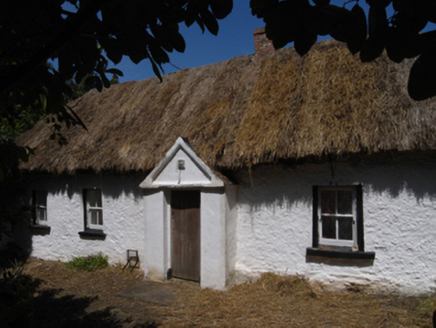Survey Data
Reg No
15702645
Rating
Regional
Categories of Special Interest
Architectural, Social
Original Use
Farm house
In Use As
Farm house
Date
1842 - 1903
Coordinates
301658, 139322
Date Recorded
21/08/2007
Date Updated
--/--/--
Description
Detached four-bay single-storey lobby entry thatched farmhouse with dormer attic, extant 1903, on a rectangular plan off-centred on single-bay single-storey gabled windbreak. Burnt, 1992. Restored, 1993. Now disused. Hipped oat thatch roof on collared timber construction with pressed iron-covered blind stretchers to ridge having blind scallops, red brick Running bond off-central dwarf chimney stack having stepped capping, and blind stretchers to eaves having blind scallops. Limewashed roughcast battered walls with rendered "bas-relief" strips to corners. Square-headed off-central door opening with concrete threshold, and concealed dressings including timber lintel framing timber boarded or tongue-and-groove timber panelled door. Square-headed window openings with concrete or rendered sills, and concealed dressings including timber lintels framing two-over-two timber sash windows having part exposed sash boxes. Set perpendicular to road with limewashed piers to perimeter having rendered segmental capping supporting flat iron double gates.
Appraisal
A farmhouse identified as an integral component of the nineteenth-century vernacular heritage of County Wexford by such attributes as the alignment perpendicular to the road; the rectilinear lobby entry plan form off-centred on a characteristic windbreak; the construction in unrefined local materials displaying a battered silhouette with a flaking surface finish revealing evidence of "daub" or mud; the disproportionate bias of solid to void in the massing; and the high pitched roof showing a degraded oat thatch finish. Having been reasonably well maintained, the elementary form and massing survive intact together with substantial quantities of the original fabric, thus upholding the character or integrity of the composition. Furthermore, adjacent "tin roofed" outbuildings (extant 1840) continue to contribute positively to the group and setting values of a neat self-contained ensemble making a pleasing visual statement in a rural street scene.
